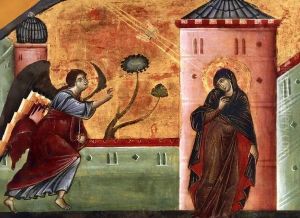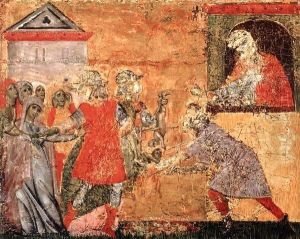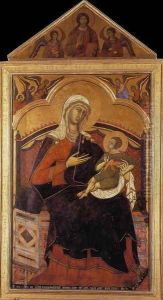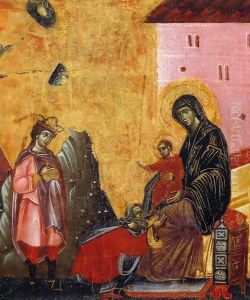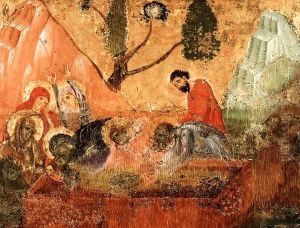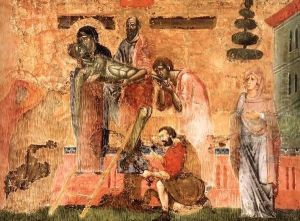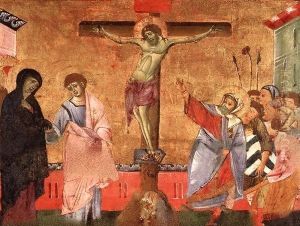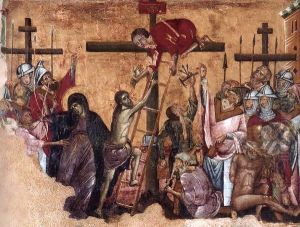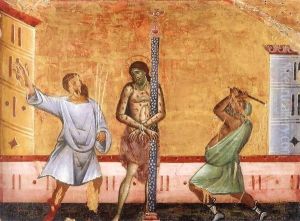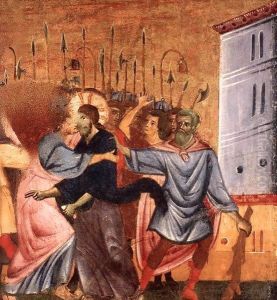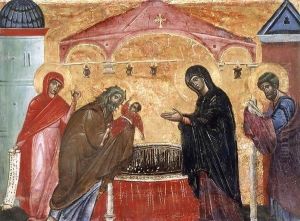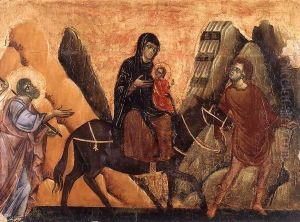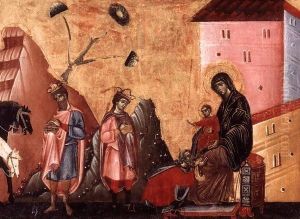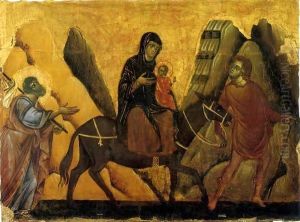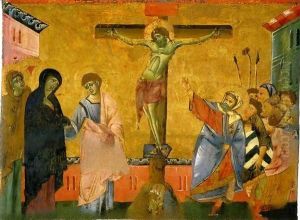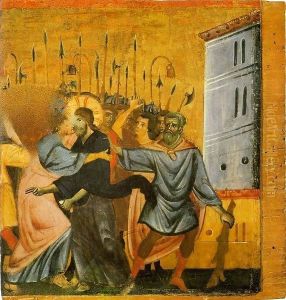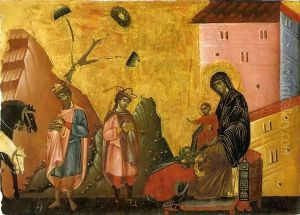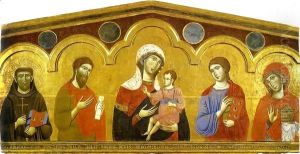Guido Da Siena Paintings
Guido da Siena, whose existence is not documented by contemporary records but is inferred from artistic style and historical context, is an Italian painter mostly known for his works created during the second half of the 13th century in Siena. The exact dates of his birth and death are not known, and much of his biography is the subject of speculation based on the stylistic characteristics of his paintings. He is often considered a predecessor to the famous Sienese artist Duccio di Buoninsegna.
Guido's art is representative of the Byzantine influence on Italian painting of the time, characterized by its gold backgrounds and static figures. However, he is also noted for incorporating an increased sense of three-dimensionality and a more naturalistic approach to human figures than was typical of Byzantine art, which hints at the early stages of the Italian Renaissance.
His most recognized work is the large enthroned Madonna painting known as the 'Maestà', which was created for the main altar of the Church of San Domenico in Siena. This piece is significant for its grand scale and detailed depiction of the Madonna and Child, surrounded by angels and saints. It reflects the devotional fervor and the importance of the Virgin Mary in Siena during that period.
The influence of Guido da Siena is seen in the development of the Sienese School of painting, which became one of the major styles in Italy. Despite the uncertainty surrounding his life, his work provides important insight into the artistic transition from the Medieval period to the Renaissance. Because of the lack of documentation, some art historians have speculated that Guido may be a composite figure attributed with works that could be by several different artists from Siena of that time.
